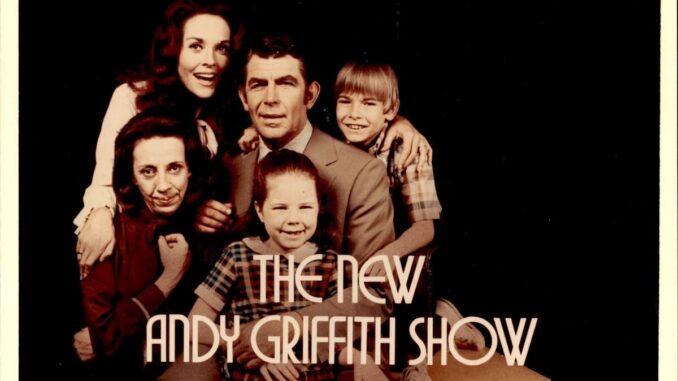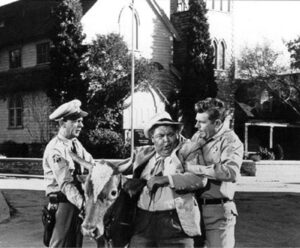
Ron Howard sheds light on a key aspect of the beloved scenes in The Andy Griffith Show. Debuting as Opie Taylor at just six years old, Howard starred in the series, which aired for eight seasons from 1960 to 1968, and remains one of the most cherished comedies, with numerous iconic moments and quotes still referenced today.
In a recent appearance on Conan O’Brien Needs a Friend, Howard explained an essential feature of the show: its slower, drawn-out dialogue sequences. He revealed that “those bits were usually when the show was short.” As the production team neared the end of their planned three-day shooting week, the showrunner would approach Andy Griffith if the episode was running shorter than the designated air time.
As a result, Griffith and Don Knotts, who played Barney Fife, would often come in to film one of these extended dialogue scenes. Howard shared his memories:

“Well, those bits were usually when the show was short. We would shoot Monday, Tuesday, and Wednesday, using a single camera. We would rehearse on Thursdays, read the script, rehearse again on Fridays, and then shoot again Monday, Tuesday, and Wednesday. Several times, the scenes you’re referring to, usually between Don and Andy, would arise when Aaron Ruben, our showrunner, came down to talk to Andy. Andy would always call Don ‘Jessie’ and say, ‘Jessie, we’re short! Come on.’ The last thing at the end of the Wednesday night shoot would be those two, having briefly discussed it, creating one of these scenes.”
Each episode of The Andy Griffith Show aimed to fit a half-hour time slot, translating to about 26 minutes of actual content after accounting for commercials. Given the show’s focus on character development rather than intricate plots, it’s understandable that they sometimes came in under time. What mattered most was not just what was written but how the characters interacted with one another.
Interestingly, it seems many of these scenes were improvised. Knotts and Griffith may have used the extra time to linger over their lines, delivering them in their characteristic, leisurely style. Conversely, they also utilized mundane conversations to fill the gaps. What appeared to be casual and unhurried dialogue was, in fact, purposefully paced, contributing to the show’s unique rhythm.
These scenes enhanced the natural feel that defined The Andy Griffith Show. While Knotts, Howard, Griffith, and the rest of the cast portrayed characters, they always felt like real, fully fleshed-out individuals. Howard’s reflections reveal that this characterization emerged from a collaborative effort, with two friends bonding over the necessity of extending their run time. This camaraderie is evident on screen, giving rise to the beautiful dynamic that The Andy Griffith Show so expertly explored.
